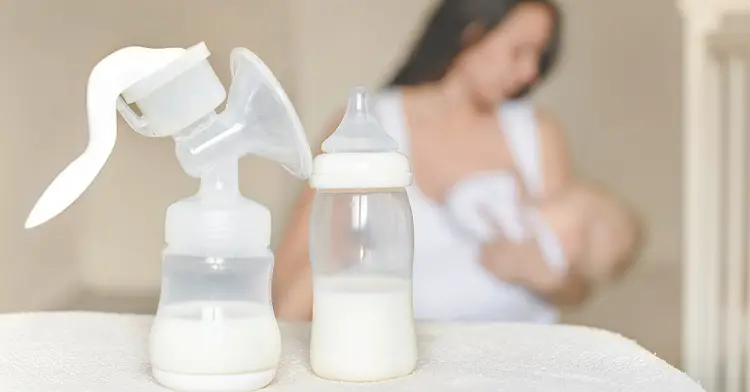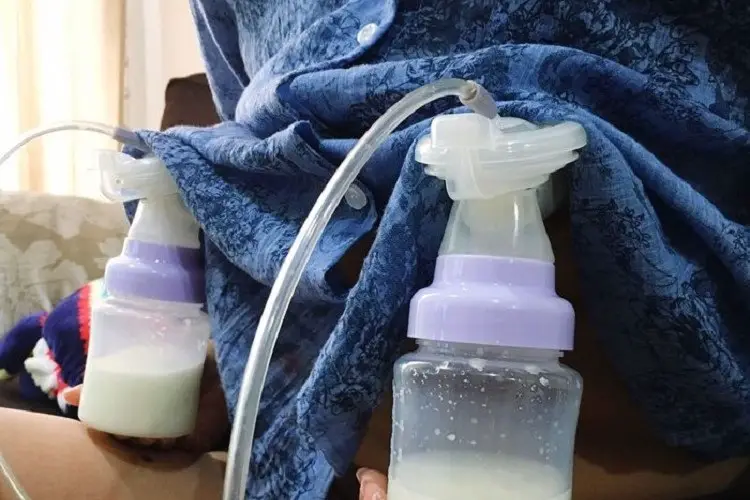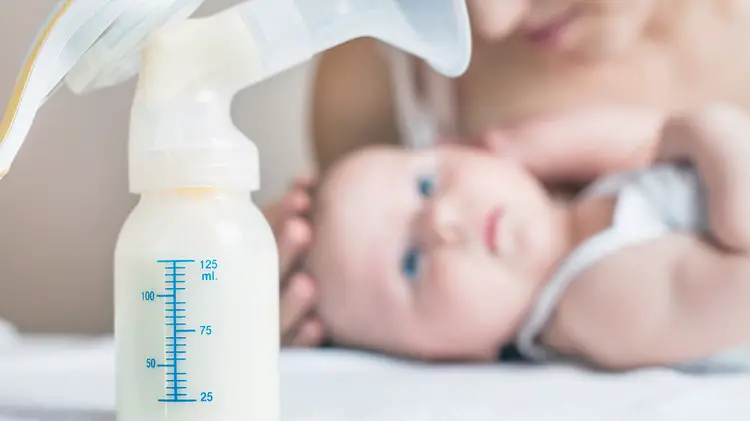Sadly it is time to hang up your breast pump, the pump you had wonderful experiences with. The pump you shared bitter-sweet memories with, the pump that helped you all through the breastfeeding journey.
Breast pumps are expensive, so it’d be a shame if they ended up in a dump yard. One may ask what to do with an old breast pump? Well, this depends on if you and your partner plan on having another baby, or whether you’re sure that you’ve done pumping forever.
If you and your partner plan on expanding your family soon, then you can put it in storage. As long as your breast pump is in good working condition, you should be able to use it soon.
In this article, we will share helpful tips on what to do with an old breast pump when you’re done pumping.
Open System Pump Vs Closed System Pump

Usually, a breast pump comes in kinds of shapes, capacities, and prices, but there are two key differences to look out for. The breast pump may either be a closed-system breast pump or an open-system breast pump.
These differences will determine what to do with the old breast pump once you’re done pumping.
Closed System Breast Pump
Some popular breast pumps in the market include Medela Pump in Style with Max Flow, Medela Freestyle Flex, Spectra S1, and S2, Medela Symphony, Ameda Purely Yours, Hygeia EnJoye, and Baby Buddha.
Key Features:
- They have built-in barriers that separate the motor and the collection kit. Ensuring no milk or air can get trapped inside the motor keeps mold and other microorganisms at bay.
- They can be cleaned and sanitized easily.
- They are safer and can be used by more than one mom since there are no chances of cross-contamination. Meaning that there are a lot of options for disposal as well.
Open-System Breast Pump
This includes Medela Pump in Style Advanced and Medela Freestyle
Key Features:
- They are designed for use by a single person only.
- Open-system pumps have no barrier between the motor and the collection kit. Breast milk can practically come out through the tubing and into the motor.
- Since the inside of the pump is dark, moist, and warm, mold and other bacteria can thrive on it.
- Open-system pumps are quite difficult to clean or sanitize even if you buy all new tubing and parts. This could lead to the growth of mold or other harmful bacteria.
If your breast pump is open-system, you must make sure it’s cleaned well after every use; especially those parts that are always in direct contact with the breasts or breast milk.
Some parts on some machines can be washed using the dishwasher, while others may need to be cleaned by hand.
Always check with the manufacturer to know what’s required for each pump model to avoid damaging it during a cleaning session. When you’re done cleaning, sanitize the pump parts.
Since open-system pumps are meant to be used for only one person. Therefore, it’s best advised not to share or pass it on to another mom when you’re done nursing.
You can find a lot of information online and in print on the potential risks of sharing an open-system breast pump. Due to this reason, a lot of women are shying away from accepting or purchasing a used one.
You can know your pump’s system by checking online or calling the pump manufacturer. Alternatively, consult an International Board Certified Lactation Consultant (IBCLC) for more assistance.
What To Do With An Old Breast Pump

1. Storing Pump for Future Baby
If you and your partner plan on having another child, or even if you’re unsure whether another baby is in the cards, it’s a good idea to keep your pump.
You can always get a new breast pump with the help of insurance for each baby, but it will be very useful to have an extra breast pump as a backup.
I had two pumps when I had my second and third children, I use to leave one at work – this made my movement a lot easier with not having to carry the pump with me every day.
Here are practical steps to pack up your breast pump to ensure they’re kept in good condition for future use.
- Clean your pump, including all its accessories that can’t be washed (such as your charger, car adapter, etc.), by wiping them down using Medela Quick-Clean Wipes.
- Sterilize your pump accessories and bottles, and then allow them to air dry completely.
- Once this is done, put the accessories in gallon-sized Ziploc bags or plastic containers for proper storage.
- Make sure you put all the pump accessories in a bag and, if possible, store them in an environment where the temperature is somewhat controlled. So, if you have to choose between your drafty basement and a garage during the hot summer, it’s best advised to store it in the basement.
Anytime you’re ready to use the breast pump again, you should wash and sterilize all pump parts, including the bottles you plan to reuse.
Hint:
Old pump accessories can lose suction sometimes; this is why it’s very important to replace breast pump parts occasionally. We suggest you get a new set of pump accessories when you start pumping again.
Then, check the level of suction from the new pump accessories with your old pump accessories. This will hint that the level of suction of your old accessories is not as effective as before anymore.
2. Sell or Donate Your Breast Pump
If you don’t see yourself pumping anymore, then selling your used breast pump or donating it may be the best option.
However, used breast pumps should only be reused by another person if they are closed system pump. If your breast pump is an open system pump, do not sell or donate your used breast pump.
Where can I sell my breast pump?
One place you can sell your breast pump is at Milkstash; they focus on clothes, breastfeeding, and pumping gear.
They are more secure than any other online marketplaces, as sales can be done either with a debit or credit card and they also run a refund system too.
You can also look out for any mommy and kid secondhand shops in your area that may be selling baby accessories and supplies.
Alternatively, Facebook might be your last resort if you’ve tried everything. Try searching for any local mommy groups, you may be surprised at what you can sell (or buy!) on there.
Where can I donate my pump?
You can donate your breast pump at Goodwill or the Salvation Army. These two places will gladly accept used breast pump donations.
Most charitable organizations will reject closed system pumps due to their concern with personal medical devices.
You can also donate your pump on Craigslist or Freecycle to a mom who may need it. You can put a call through and ask, though or just go online and look for a women’s shelter or a charity group that accepts used closed system pumps.
3. Recycle Your Breast Pump
Recycling it may be another option if you’re not ready to sell or give away your breast pump when you’re done with it. Some manufacturers of breast pumps, like Medela and Hygeia, have pump recycling programs.
Medela’s program operates by asking for a shipping label that will bear address and confirmation number, and then you ship your breast pump and charger (not your accessories) to them. Then, a third-party provider breaks down the pump parts and recycles whatever they can.
Usually, breast pump manufacturers only recycle their pump products. If your breasts pump manufacturer does have a recycling program, and you feel it is necessary, call or email them! Let them know about it.
For Spectra breast pump recycling, Spectra recommend you recycle your old Spectra breast pump by taking it to an appliance or PC recycling center. That may be a possibility for other non-Spectra pumps without a recycling program.
Alternatively, you can look online to see if you can find any local appliance recycling center that will accept your pump. This might be a lot easier for you than shipping it back to your manufacturer of choice.
What About the Pump Kit And Accessories
Do not share or sell your breast pump kit and accessories since they come into contact with the mother’s milk and might conceivably pass on diseases from an infected mother.
A clean-looking pump part may carry yeast infections that are quite difficult to eliminate. They may also carry other microorganisms like hepatitis and cytomegalovirus, which can be easily transmitted from one mom to another.
For the general well-being of your baby, make sure to discard any used accessories such as breast shields, backflow protectors, teats, cap valves, and sealing discs.
If you feel you can’t throw them all out, you can look at any local recycling center in your area to see if there is anything they can take. Anything that is left out of them should be tossed away immediately.
Read: How to Use Medela Breast Pump (10 Easy Steps)
Should I Use an Old Breast Pump?
The idea of using a secondhand breast pump depends solely on the mother. If you decide to go for an old breast pump, here are a few things to keep in mind.
1. Get a Breast Pump That Poses No Contamination Risk
This is the first thing you must keep in mind because your health and your little one’s health are at risk if you share an open-system pump from another mother.
If a friend or a family relative gifts you a used pump, do your research first to find out if it has an open or closed system. The same applies when buying the pump from an online store.
Do not be deceived; the open-system pump is very difficult to sterilize. No amount of sterilization will thoroughly sanitize it. So save yourself the emotional stress and physical pain it might you or your baby.
2. Motor Strength
The breast pump stimulates milk production from your breast as your child suckles. Usually, mothers tend to use their pump two to three times a day over several months. This frequent use could cause make the motor to slow down.
A slow pump will not produce as much milk as a new one would; this could make you spend a lot more time pumping milk. And situations like this can make you introduce your baby to formula earlier than anticipated.
3. Ease of transportation
This is very important, especially for moms who are always on the go or find themselves traveling more frequently.
Before getting that used breast pump, ensure that the used pump is lightweight and can be easy to carry around. Bulky breast pumps can occupy too much space, and this can be quite inconvenient, especially while traveling.
Related Posts:
- What To Do With Leftover Breast Milk
- How To Travel With Breast Milk
- What Happens If Baby Drinks Spoiled Breast Milk
- How To Get Your Milk To Refill Faster
Conclusion
We hope this article has given you in-depth knowledge to answer the question of what to do with an old breast pump. Keep in mind that there are many things you you can do with your old used breast pump, aside from tossing them all away.
However, whether your pump operates an open or closed system, we’ve outlined ways by which you can store, donate, resell, and recycling them.
As we mentioned earlier, open-system breast pumps pose health risks and should never be shared under any condition.
